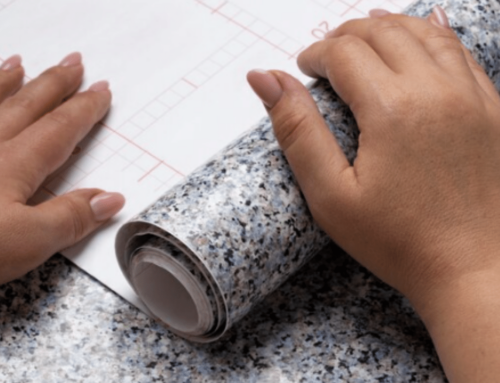Laminate and hardwood are likely to come up when you’re looking for a new flooring installation for your home. However, these two forms of flooring are different in terms of functionality, even if they initially appear identical. Here at Vinyl Flooring & Beyond, we can help you discover the upsides and downsides of each flooring installation to make the best decision for your property.
WHAT ARE HARDWOOD FLOORS?
Since the classical era, hardwood flooring has been among the most widely used floor coverings. This is because of its adaptability in terms of both form and function, as well as a built-in charm that provides each flooring installation with a particular personality and attractiveness.
There are currently two primary varieties of hardwood flooring, both of which have a long history of use in residential architecture.
Solid hardwood flooring is composed of planks that are either obtained raw or prefinished and are made from individual pieces of natural wood.
Engineered hardwood flooring consists of a thin layer of prefinished solid hardwood on top of multiple layers of actual wood or plywood.
Since hardwood flooring is made from slower-growing trees, it is significantly denser and more lasting than its softwood competitors. They endure better and demand less care as a result. The National Oak Flooring Manufacturers Association (NOMFA) uses the Wood Hardness Rating scale to assess the actual durability of different species.
PROS AND CONS OF HARDWOOD FLOORS
PROS
- An investment over time – If properly maintained, wood floors can survive for more than a century. As a result, they can appear to be a significant purchase at first, but unlike other types of flooring, they don’t need to be replaced every ten or twenty years.
- Enduring quality – Wood flooring only needs to be renovated or re-sanded, whereas carpet and vinyl flooring need to be changed after a specific amount of time.
- Simple maintenance and cleanliness – The hardwood flooring is in good condition if you sweep, mop, and maintain it dry. In addition, the non-electromagnetic aspect of wooden floors means that they don’t attempt to draw a lot of debris, dust, or dirt.
- Optimal indoor air quality – No parasites, including fleas, dust mites, or spores, may grow on wood floors. They stop allergens of any kind, such as mildew or animal dander, from drawing and causing allergies.
- Simple installation – It’s simple to lay hardwood, and if installed correctly, it can improve the quality of your house.
CONS
- Price – Compared to our standard carpets or tiles, hardwood flooring is much more expensive. Thus, not everyone may find this an economical choice for flooring installation.
- Likely to be prone to Termite attack – Most modern homes are constructed with the knowledge that termites feed on wood. So it’s crucial to choose the proper kind of wood to prevent these issues.
- Noise – After several decades of use, continuous deterioration and excessive movement can change some of the wood floorings. Walking across the surface could result in clicking and creaking noises.
- Can be ruined with water – The wooden floors can be cleaned with a mop, but they shouldn’t be soaked wet. If leakage occurs, the hardwood flooring will be ruined.
- Scratching – You must take appropriate care because wood flooring is sensitive to dents and scratches. Therefore, it would be best if you use particular caution when interacting with kids and animals.
WHAT ARE LAMINATE FLOORS?
Laminate flooring is an artificial multi-layer flooring product that has been laminated together. Laminate flooring resembles wood with a photographic inlay layer behind a clear protective covering. Melamine resin and fiber board components are commonly used to make up the inner core layer.
Laminate floors were unknown until the middle of the 1970s but are now a standard in millions of houses. Once mostly installed as a type of cheap flooring, laminate floors continue to hold a firm position as an affordable, practical flooring option.
Basics of Laminate Floors
The Swedish firm Perstorp created laminate flooring in 1977. The concept was to use waste wood for construction projects by applying high pressure, heat, and chemical binders. The outcome was usable flooring that was also rather lovely.
Particleboard wood serves as the foundation for laminate floors, which are topped with an additional layer and a transparent wear layer.
PROS AND CONS OF LAMINATE FLOORS
PROS
- Cost – Due to its affordability, laminate flooring is most well known. Compared to natural timber, which can be rather costly depending on how exotic the tree is, laminate flooring is far cheaper because it is primarily created from composite wood that is compressed together at extreme heat.
- Aesthetic appearance – Numerous laminate floorboards have distinctive embossing to precisely reproduce the look and feel of natural wood.
- High resistance to scratches – In addition to being durable, laminate flooring’s composite timber substance also has excellent scratch resistance in its top layer.
- Simple installation – Laminate flooring is a form of the floating floor that often has a basic lock-together system that is relatively simple to use, enabling easy flooring installation.
- Minimal maintenance – Cleaning laminate flooring is simple. A soft microfiber cloth can easily remove spills and markings, while dirt and dust are simple to sweep or vacuum up.
CONS
- Can’t be refinished again – The top layers of laminate flooring are made to be durable and provide the appearance of natural wood. These cannot be sanded down since doing so could remove the photographic layer and weaken the floors’ durability.
- Not moisture-proof – Being made of wood, laminate flooring is not impervious to the effects of moisture. Therefore, it’s not suitable as hard flooring for bathrooms and should be used with caution in kitchens or laundries.
- The top layer may easily chip – Although the wear layer of laminate flooring is remarkably durable, the boards are easily chipped.
WHICH IS BETTER? HARDWOOD OR LAMINATE FLOORING?
No matter what kind of flooring you select for your house, you’ll find an almost limitless assortment of design alternatives thanks to a flooring business that is constantly evolving. Both laminate and hardwood floors can be modified to match your home’s décor and color scheme.
If you want a surface with a distinctive appearance and feel of natural wood, hardwood flooring can be the best option. However, laminate can imitate tile or stone’s appearance and deliver more economical wood-like looks.
When it comes to pricing, laminate floors are more cost-effective than hardwood floors. But the value of your house becomes more prominent as it ages with the hardwood flooring. Both have pros and cons, as you read at the top. It is up to you what suits you and your home the most. If you need professional advice, call the experts.
For your flooring installation concerns, call us today! Here at Vinyl Flooring & Beyond, we ensure we give our clients the best services they deserve with our professional installers. Visit our website or contact us for more information and an appointment schedule.




